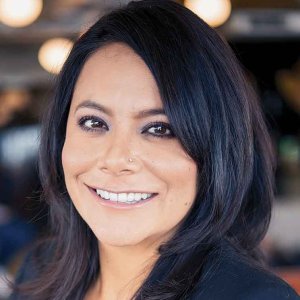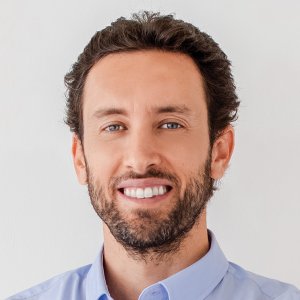Expanding South to Meet Underserved Demand

STORY INLINE POST
Q: What challenges have Fibras faced in 2017 and what has been done to overcome them?
A: This has been a challenging year, mainly due to three macroeconomic factors: the increase in interest rates, the elevated US dollar-Mexican peso exchange rate and higher inflation. Also, international investors withdrawing from emerging markets due to perceived speculation produced a surplus of Fibra certificates, which lowered their price.
The restored confidence in emerging markets is an opportunity, given the existing liquidity in international markets. Portfolio managers are returning to emerging markets. Fibras are appealing in this scenario because we are trading under the net value of our assets. For example, if a company buys shares of FUNO at the moment, it basically purchases real estate assets at a 25 percent discount.
Q: What is your view of the regulatory changes recently made to Fibras in Mexico?
A: There have been several positive changes, characterized by the goodwill of the governing institutions, that have facilitated improvement. We have developed a recurring issuer program, which involves authorization for a certain volume of certificates, without them having to be processed at once, but gradually as a total allowance, providing greater market flexibility.
Whether or not Fibras will be able to invest in projects with returns obtained from sources other than leasing has been an extensively discussed issue. At the moment, regulations bind Fibras to invest at least 70 percent of their assets in real estate for rent, and 30 percent in other financial instruments. So far, the regulation remains as it is but some points have been clarified and made more flexible.
Q: How are Fibras changing in Mexico, compared to similar financial mechanisms abroad?
A: US instruments date from the early 1970s, and like in Mexico, were originally diversified in several sectors. The US instruments are specialized at the moment, which I believe sets the trend for Mexico, as we have Fibras, such as Terrafina and Prologis, which are specifically designed for one industry. In the long term, instead of one large, diversified Fibra, I think we will have different small ones for specific sectors. FUNO has not done this so far because we believe that our business is more profitable using the current strategy but as soon as we find specialization more advantageous, we will move toward it. The size of our company allows us to divide into smaller Fibras that can thrive independently.
Q: What is the importance of the investment made by Afores in Fibras?
A: Most Fibras have been anchored to an Afore, which for us represents the patrimonial investment of Mexican citizens. Afores, in return, find Fibras as a very useful vehicle to ensure their assets are invested in a very solid sector, with high capital returns, especially given that they often have the resources but lack a solid long-term investment opportunity.
Q: What do Fibras need to do to remain a competitive investment option for Afores given an open international market?
A: Since their creation, Fibras have been regulated by two articles of the ISR Law. One says that their main goal is to promote real estate investment in Mexico. It does not forbid investment abroad, but the incentive is to develop the national industry. Afores can buy shares of any company but Fibras are mostly committed to Mexico, regardless of whether or not it is possible to invest internationally. FUNO is committed to promoting the development of the industry in Mexico, and our capital will stay in the country.
Q: What are your expectations for the Mitikah project?
A: Real estate projects have been focused mainly in Polanco and Santa Fe, and the southern part of the city has been largely neglected. To address a real need, we are practically building a city, which will be FUNO’s and the Helios CKD’s legacy. Mitikah has developed and applied an integrated process involving the community, the authorities and the neighbors. We take care to add value to the community, which is an approach that has taken a lot time and resources, but that we are glad to have implemented.
The first few years were devoted to permits, licenses and infrastructure matters, among other factors. Today, we are building about 4,000m2 to 5,000m2 of structure weekly, and we also have made great progress in the foundations. The first office building is already constructed up to the 10th level. Regarding the retail component, we have pre- leased 50 percent of the area. For the residential tower, even though it is expected to be delivered in full by 2020, the sales have shown that it is already a huge success, which I believe is due to Mitikah being a unique and high- quality project. We are entering an excellent market in a mature area with a good socioeconomic balance.
Q: What are your expectations for Fibras in 2018, especially regarding the possibility of Fibras investing in sectors other than infrastructure?
A: Regarding other opportunities across different sectors, FUNO has a strong foothold in university projects. We lease to the university operator, with the ultimate goal of fostering educational development. We also have the Puerta de Hierro Hospital in Guadalajara, which is externally operated by the renter. To my knowledge, there are no plans yet to create a Fibra specifically for hospitals, but it is unquestionably a sector in which Fibras are growing rapidly.
I think 2018 will be a complicated year. There is a lot of global tension rooted in international conflicts. Also, the elections in Mexico will increase speculation. But Fibra investments are planned for the long term, about 20 to 50 years, so the possible volatility of the next year is something we are prepared for. Often, in these uncertain scenarios, the best opportunities arise. We must be prepared and maintain a certain liquidity to take advantage of them. In Fibra Uno we are convinced that Mexico is a very attractive place to continue investing. We will continue focused on generating the maximum amount of value over time and building a world class real estate company with the best property portfolio in Mexico.























